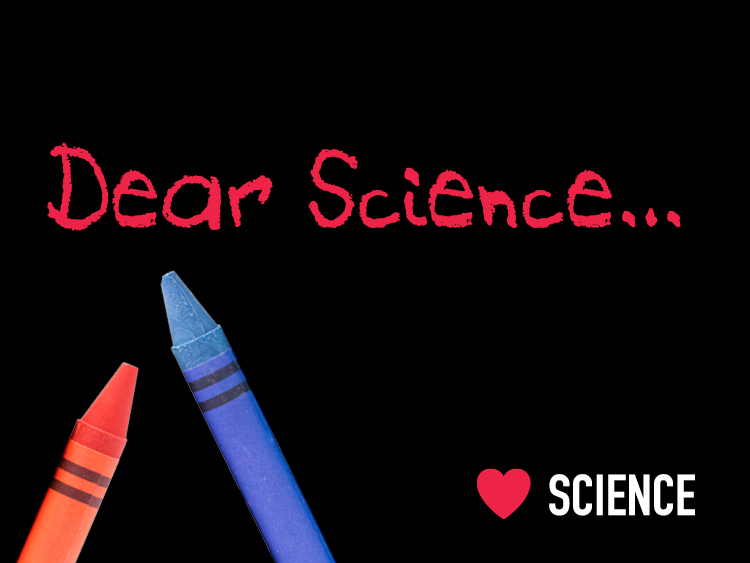Join Andrew and Samantha for another Kitchen Science experiment you can try at home. Use red cabbage to create a pH indicator. It can tell you whether something is an acid or a base, as well as how acidic or basic it is, based on how much the color changes. Use your new pH indicator to see how acidic and basic different items around your house are. Keep reading to learn all the details.
Materials to Collect
- 1 head of red cabbage
- Sharp knife
- Pot to boil water in (or blender)
- Strainer or colander
- Glass bowl
- clear cups or glasses
- household liquids to test (vinegar, baking soda, juices, soaps, bleach, ammonia, and anything else you want!)
- Something to stir with
Make your Indicator!
- Take your red cabbage and have an adult help you cut off about 2-3 cups (the amount doesn’t need to be exact, the more cabbage, the more indicator you will get).
- Have an adult boil a pot of water and place the cabbage pieces in. Bring the water back to a boil for a couple minutes. Turn heat off and let sit for at least 10 minutes. Again, there’s no magic number, you just want the water to be a reddish-purple color. (You can also place the cabbage in a blender with water).
- Strain the water out into a glass bowl and let cool.
- Once it has cooled, pour some into clear cups or glasses and add different liquids to test.
- Gently stir or swirl the solution and see what happens!
(Be careful about mixing household cleaners together, as some combinations may produce harmful fumes. Only test one substance at a time.)
What is the Science?
What you have made is called a pH indicator. It can tell you whether something is an acid or a base, as well as how acidic or basic it is, based on how much the color changes. Think of acids and bases as opposites—acids have a low pH and bases have a high pH. For reference, water (which is neutral), has a pH of 7 on a scale of 0–14. An indicator is typically a chemical that changes color if it comes in contact with an acid or a base.
As you can see, the purple cabbage juice turns red when it mixes with something acidic and turns green when it mixes with something basic. Red cabbage juice is considered to be an indicator because it shows us something about the chemical composition of other substances.
What is it about cabbage that causes this to happen? Red cabbage contains a water-soluble pigment called anthocyanin that changes color when it is mixed with an acid or a base. The pigment turns red in acidic environments with a pH less than 7 and the pigment turns bluish-green in alkaline (basic), environments with a pH greater than 7.
Red cabbage is just one of many indicators that are available to scientists. Some indicators start out colorless and turn different colors when they mix with an acid or a base. If there is no color change at all, the substance that you are testing is probably neutral, just like water.
Use this chart to help you figure out how acidic or basic your test liquids are:
Want to know more about what exactly pH is? look here:
https://sciencetrends.com/what-does-ph-stand-for-and-mean/
Ask Your Young Scientists
- Do all the acids or bases change the indicator the same color? What do you think this means?
- Does adding a larger quantity of an acid or base change the color more?
- Do you see any patterns in what the acids or bases are used for?
More to Explore
- Make your own indicator strips by soaking coffee filters cut into strips in the red cabbage juice, then letting them dry completely. Once dry, you can dip them into a liquid to see its pH.
- After adding an acid, can you get the indicator to change back to its original color? What do you think you would have to add?
We want to see what you try at home. Share your experiments with us on social media by using the #ScienceAtPlay and tagging @CTScienceCenter.

Andrew Fotta is a STEM educator at the Connecticut Science Center. He has currently holds a CT teaching certification for grades K-6, and has spent time in the classroom in nearly all grades, and taught middle school science. In addition to teaching classes for the Science Center, Andrew is also part of a team of educators currently creating new programs aligned with the new Next Generation Science Standards for grades PreK-9. Andrew is an avid photographer, who enjoys blending science and art in his work.


